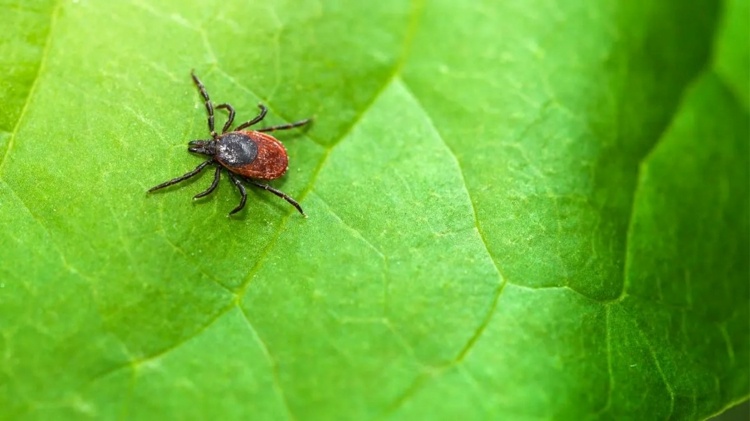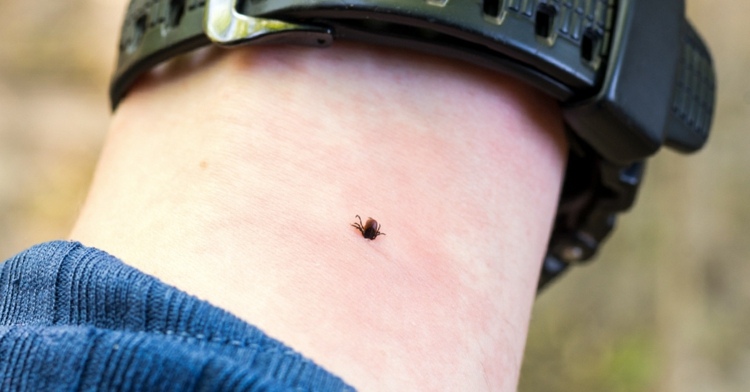Make tick protection yourself – quick & easy recipe and tips for use
The beautiful weather of the past few weeks is increasingly attracting us to nature. We go for walks in the woods and on the meadow, have a picnic or simply lie down in the grass to sunbathe. But you often forget that dangerous ticks can lurk there, or we can’t really enjoy the time outdoors because of the fear of being infected by them. You can at least reduce your worries a bit by rubbing in an anti-tick insect screen. And the great news is that you can even do tick protection yourself.

Chemicals that many want to avoid are often hidden in purchased ticks. Of course, this is especially true if we also want to protect our children from tick bites and tick-borne diseases with such a product. If, on the other hand, you make an anti-tick spray yourself, choose the ingredients yourself and always know exactly what is in your protective agent.
So you can even use your homemade spray for Children from one year use. However, keep in mind that some people cannot tolerate some essential oils. Therefore, first test the tolerance in a small area and wait 10 minutes to see whether the skin reacts with redness or itching.
Do tick protection yourself – what the parasites like and what not

We humans emit smells that ticks find particularly attractive. These are, for example, those of lactic acid and butyric acid, which we separate out through sweat, but also when breathing. But just as some smells attract them, there are also those that deter them. The lauric acid contained in coconut oil and the essential oil citriodiol, which is obtained from lemon eucalyptus, are such fragrances. For this reason, you should use at least one of these two substances if you do tick protection yourself.
By the way: How do ticks smell? It is interesting to know that ticks perceive smells through the so-called Haller organ. This organ is not located on the head like the nose in humans, but on the outer ends of the front legs.
Make ticks yourself with this recipe

In principle, the above-mentioned scents are sufficient if you want to do a natural tick protection yourself. However, you can make the scent of your spray even more pleasant by adding other essential oils. In this way you can also protect yourself against other insects. You can combine the basic ingredients in the following proportions, for example:
- 100 g coconut oil
- approx. 15 drops of lemon eucalyptus oil (i.e. citriodiol)

If you want to make the tick remedy yourself, first heat a liter of water until it boils and switch the stove off again. Put the coconut oil in a mason jar, close it and put it in the hot water to melt. If your coconut oil is already liquid, you can skip this step and mix it with the lemon eucalyptus oil straight away. Now let your finished tick agent cool down, stirring occasionally.
You can leave the finished tick agent in the glass and rub it on the skin or fill it into a spray bottle and use it as a spray. Always shake it well before use.

Combine with other essential oils
If you mix the coconut and lemon eucalyptus, you can also mix in any other oils. Lavender oil, rosemary oil, but also cedarwood oil are particularly suitable, since they are also effective against ticks. Which of these oils you choose depends solely on your preference for the fragrance.
application

Ticks lurk in tall grass and bushes. When you walk through the grass, you strip them off and they get on your body. Therefore, you should not neglect your legs when using the homemade tick repellent. However, it is not enough. Ticks do not bite immediately, but start by looking for a body area that is comfortable for them.
The ticks particularly like it where the skin is thin and moist. Therefore, it is best to rub in areas such as ankles and lower legs, but also hands, forearms and the crook of the arm. Furthermore, you should also wear some tick protection on the hairline, behind the ears and in the neck, as you can sweat there especially on warm days. The insect repellent works for about 4 hours. Then at the latest you should reapply it.
Do tick protection yourself – what else needs to be considered

Just because you manufacture and use tick protection yourself does not mean that tick infestation can be completely ruled out. It can always happen that a tick bites itself anyway. However, you can minimize this risk by paying attention to the right clothing. As far as the weather permits, wear long clothes (long-sleeved shirts or blouses, long trousers), as well as socks, which you can even pull over your legs and closed shoes. The parasites can also be discovered more quickly on light-colored clothing. After your outdoor trip, it’s important to inspect your body.

The post Do tick protection yourself – Quick & easy recipe and tips for use appeared first on Deavita.com | Living ideas, design, hairstyles, make-up, lifestyle, health and beauty tips.





















